Effect of Acetylsalicylic Acid on Biological Properties of Novel Cement Based on Calcium Phosphate Doped with Ions of Strontium, Copper, and Zinc
Abstract
1. Introduction
2. Results
2.1. Characterization of the Sr-, Cu-, and Zn-Doped Hydroxyapatite (Multi-Ion Doped HAp-miHAp)
2.2. Setting Time and Compressive Strength
2.3. In Vitro Bioactivity
2.4. Viability of Human Dental Pulp Stem Cells (hDPSCs) in the Presence of Cement Extracts
2.5. In Vivo Toxicity Analyses on Zebrafish
2.6. Antibiofilm Effect
3. Discussion
4. Materials and Methods
4.1. Synthesis of Sr-, Cu-, and Zn-Doped HAp Powder
4.2. Characterization of the Sr-, Cu-, and Zn-Doped HAp Powder
4.3. Compressive Strength
4.4. Setting Time
4.5. In Vitro Bioactivity of Cement
4.6. Acetylsalicylic Acid Addition
4.7. Biocompatibility Assessment
4.7.1. In Vitro Cytotoxicity Analysis on Dental Pulp Stem Cells (hDPSCs)
Isolation, Cultivation, and Characterization of hDPSCs
Sterilization of Samples
Preparation of Cement Extracts
MTT Assay
4.7.2. In Vivo Biocompatibility Assessment
Cement Extract Preparation
In Vivo Experiments in the Zebrafish Model
In Vivo Toxicity Assessment
Inflammatory and Immunosuppressive In Vivo Response Determination
Anti-Angiogenic Potential Evaluation in the Zebrafish Model
4.8. Antibiofilm Assay
4.8.1. Bacterial Strains and Growth Conditions
4.8.2. Biofilm Formation
4.8.3. Biofilm CFU Quantification
4.8.4. Determination of CFUs in Medium Surrounding the Discs
4.9. Statistical Analysis
5. Conclusions
Supplementary Materials
Author Contributions
Funding
Institutional Review Board Statement
Informed Consent Statement
Data Availability Statement
Acknowledgments
Conflicts of Interest
References
- GBD 2017 Disease and Injury Incidence and Prevalence Collaborators. Global, Regional, and National Incidence, Prevalence, and Years Lived with Disability for 354 Diseases and Injuries for 195 Countries and Territories, 1990–2017: A Systematic Analysis for the Global Burden of Disease Study 2017. Lancet 2018, 392, 1789–1858. [Google Scholar] [CrossRef] [PubMed]
- Kidd, E.A.M. How “clean” Must a Cavity Be before Restoration? Caries Res. 2004, 38, 305–313. [Google Scholar] [CrossRef] [PubMed]
- Marsh, P.D. Dental Plaque as a Biofilm and a Microbial Community—Implications for Health and Disease. BMC Oral Health 2006, 6 (Suppl. 1), S14. [Google Scholar] [CrossRef] [PubMed]
- Zheng, J.; Wu, Z.; Niu, K.; Xie, Y.; Hu, X.; Fu, J.; Tian, D.; Fu, K.; Zhao, B.; Kong, W.; et al. Microbiome of Deep Dentinal Caries from Reversible Pulpitis to Irreversible Pulpitis. J. Endod. 2019, 45, 302–309.e1. [Google Scholar] [CrossRef] [PubMed]
- Schwendicke, F.; Walsh, T.; Lamont, T.; Al-Yaseen, W.; Bjørndal, L.; Clarkson, J.E.; Fontana, M.; Gomez Rossi, J.; Göstemeyer, G.; Levey, C.; et al. Interventions for Treating Cavitated or Dentine Carious Lesions. Cochrane Database Syst. Rev. 2021, 7, CD013039. [Google Scholar] [CrossRef] [PubMed]
- Maltz, M.; Henz, S.L.; de Oliveira, E.F.; Jardim, J.J. Conventional Caries Removal and Sealed Caries in Permanent Teeth: A Microbiological Evaluation. J. Dent. 2012, 40, 776–782. [Google Scholar] [CrossRef] [PubMed]
- Franzon, R.; Guimarães, L.F.; Magalhães, C.E.; Haas, A.N.; Araujo, F.B. Outcomes of One-Step Incomplete and Complete Excavation in Primary Teeth: A 24-Month Randomized Controlled Trial. Caries Res. 2014, 48, 376–383. [Google Scholar] [CrossRef] [PubMed]
- Innes, N.P.T.; Frencken, J.E.; Schwendicke, F. Don’t Know, Can’t Do, Won’t Change: Barriers to Moving Knowledge to Action in Managing the Carious Lesion. J. Dent. Res. 2016, 95, 485–486. [Google Scholar] [CrossRef]
- Ganas, P.; Schwendicke, F. Effect of Reduced Nutritional Supply on the Metabolic Activity and Survival of Cariogenic Bacteria in Vitro. J. Oral Microbiol. 2019, 11, 1605788. [Google Scholar] [CrossRef]
- Marggraf, T.; Ganas, P.; Paris, S.; Schwendicke, F. Bacterial Reduction in Sealed Caries Lesions Is Strain- and Material-Specific. Sci. Rep. 2018, 8, 3767. [Google Scholar] [CrossRef]
- Natale, L.C.; Rodrigues, M.C.; Xavier, T.A.; Simões, A.; de Souza, D.N.; Braga, R.R. Ion Release and Mechanical Properties of Calcium Silicate and Calcium Hydroxide Materials Used for Pulp Capping. Int. Endod. J. 2015, 48, 89–94. [Google Scholar] [CrossRef] [PubMed]
- Gandolfi, M.G.; Siboni, F.; Botero, T.; Bossù, M.; Riccitiello, F.; Prati, C. Calcium Silicate and Calcium Hydroxide Materials for Pulp Capping: Biointeractivity, Porosity, Solubility and Bioactivity of Current Formulations. J. Appl. Biomater. Funct. Mater. 2015, 13, 43–60. [Google Scholar] [CrossRef] [PubMed]
- Gandolfi, M.G.; Siboni, F.; Prati, C. Chemical-Physical Properties of TheraCal, a Novel Light-Curable MTA-like Material for Pulp Capping. Int. Endod. J. 2012, 45, 571–579. [Google Scholar] [CrossRef] [PubMed]
- Li, X.; De Munck, J.; Van Landuyt, K.; Pedano, M.; Chen, Z.; Van Meerbeek, B. How Effectively Do Hydraulic Calcium-Silicate Cements Re-Mineralize Demineralized Dentin. Dent. Mater. Off. Publ. Acad. Dent. Mater. 2017, 33, 434–445. [Google Scholar] [CrossRef] [PubMed]
- Pedano, M.S.; Li, X.; Camargo, B.; Hauben, E.; De Vleeschauwer, S.; Yoshihara, K.; Van Landuyt, K.; Yoshida, Y.; Van Meerbeek, B. Injectable Phosphopullulan-Functionalized Calcium-Silicate Cement for Pulp-Tissue Engineering: An in-Vivo and Ex-Vivo Study. Dent. Mater. Off. Publ. Acad. Dent. Mater. 2020, 36, 512–526. [Google Scholar] [CrossRef] [PubMed]
- Vallés, M.; Mercadé, M.; Duran-Sindreu, F.; Bourdelande, J.L.; Roig, M. Influence of Light and Oxygen on the Color Stability of Five Calcium Silicate–Based Materials. J. Endod. 2013, 39, 525–528. [Google Scholar] [CrossRef] [PubMed]
- Balać, I.; Bugarski, B.; Ćosić, I.; Dramićanin, M.; Đorđević, D.; Filipović, N.; Ignjatović, N.; Janaćković, Đ.; Kojić, M.; Manojlović, V.; et al. Biomaterijali; Institut tehničkih nauka Srpske akademije nauka i umetnosti: Belgrade, Serbia, 2010; ISBN 978-86-80321-23-3. [Google Scholar]
- Lee, J.-B.; Park, S.-J.; Kim, H.-H.; Kwon, Y.-S.; Lee, K.-W.; Min, K.-S. Physical Properties and Biological/Odontogenic Effects of an Experimentally Developed Fast-Setting α-Tricalcium Phosphate-Based Pulp Capping Material. BMC Oral Health 2014, 14, 87. [Google Scholar] [CrossRef]
- Ginebra, M.-P.; Canal, C.; Espanol, M.; Pastorino, D.; Montufar, E.B. Calcium Phosphate Cements as Drug Delivery Materials. Adv. Drug Deliv. Rev. 2012, 64, 1090–1110. [Google Scholar] [CrossRef]
- Katoh, Y.; Suzuki, M.; Kato, C.; Shinkai, K.; Ogawa, M.; Yamauchi, J. Observation of Calcium Phosphate Powder Mixed with an Adhesive Monomer Experimentally Developed for Direct Pulp Capping and as a Bonding Agent. Dent. Mater. J. 2010, 29, 15–24. [Google Scholar] [CrossRef]
- Kazuz, A.; Radovanović, Ž.; Veljović, Đ.; Kojić, V.; Jakimov, D.; Vlajić-Tovilović, T.; Miletić, V.; Petrović, R.; Janaćković, Đ. α-Tricalcium Phosphate/Fluorapatite-Based Cement—Promising Dental Root Canal Filling Material. Process. Appl. Ceram. 2022, 16, 22–29. [Google Scholar] [CrossRef]
- Cherng, A.M.; Chow, L.C.; Takagi, S. In Vitro Evaluation of a Calcium Phosphate Cement Root Canal Filler/Sealer. J. Endod. 2001, 27, 613–615. [Google Scholar] [CrossRef] [PubMed]
- De Mori, A.; Karali, A.; Daskalakis, E.; Hing, R.; Da Silva Bartolo, P.J.; Cooper, G.; Blunn, G. Poly-ε-Caprolactone 3D-Printed Porous Scaffold in a Femoral Condyle Defect Model Induces Early Osteo-Regeneration. Polymers 2024, 16, 66. [Google Scholar] [CrossRef] [PubMed]
- Dickens, S.H.; Flaim, G.M.; Schumacher, G.E.; Eichmiller, F.C.; Schafer, D.R.; Rutherford, R.B. Preclinical Effectiveness of a Novel Pulp Capping Material. J. Endod. 2010, 36, 1222–1225. [Google Scholar] [CrossRef] [PubMed][Green Version]
- Peters, M.C.; Bresciani, E.; Barata, T.J.E.; Fagundes, T.C.; Navarro, R.L.; Navarro, M.F.L.; Dickens, S.H. In Vivo Dentin Remineralization by Calcium-Phosphate Cement. J. Dent. Res. 2010, 89, 286–291. [Google Scholar] [CrossRef] [PubMed]
- Kazuz, A.; Radovanović, Ž.; Veljović, D.J.; Kojić, V.; Miletić, V.; Petrović, R.; Janaćković, D.J. α-Tricalcium Phosphate/Fluorapatite Based Composite Cements: Synthesis, Mechanical Properties, and Biocompatibility. Ceram. Int. 2020, 46, 25149–25154. [Google Scholar] [CrossRef]
- Degli Esposti, L.; Ionescu, A.C.; Carella, F.; Adamiano, A.; Brambilla, E.; Iafisco, M. Antimicrobial Activity of Remineralizing Ion-Doped Amorphous Calcium Phosphates for Preventive Dentistry. Front. Mater. 2022, 9, 846130. [Google Scholar] [CrossRef]
- Yong, D.; Choi, J.J.E.; Cathro, P.; Cooper, P.R.; Dias, G.; Huang, J.; Ratnayake, J. Development and Analysis of a Hydroxyapatite Supplemented Calcium Silicate Cement for Endodontic Treatment. Materials 2022, 15, 1176. [Google Scholar] [CrossRef] [PubMed]
- al-Qarni, F.; Weir, M.; Melo, M.A.; Al-Dulaijan, Y.; Almulhim, K.S.; Xu, H.H.K. Novel Calcium Phosphate Ion-Rechargeable and Antibacterial Adhesive to Inhibit Dental Caries. Clin. Oral Investig. 2022, 26, 313–323. [Google Scholar] [CrossRef] [PubMed]
- Lee, Y.-K.; Lim, B.-S.; Kim, C.-W. Mechanical Properties of Calcium Phosphate Based Dental Filling and Regeneration Materials. J. Oral Rehabil. 2003, 30, 418–425. [Google Scholar] [CrossRef]
- Zhang, J.; Liu, W.; Schnitzler, V.; Tancret, F.; Bouler, J.-M. Calcium Phosphate Cements for Bone Substitution: Chemistry, Handling and Mechanical Properties. Acta Biomater. 2014, 10, 1035–1049. [Google Scholar] [CrossRef]
- Ambard, A.J.; Mueninghoff, L. Calcium Phosphate Cement: Review of Mechanical and Biological Properties. J. Prosthodont. 2006, 15, 321–328. [Google Scholar] [CrossRef]
- Shieh, T.-M.; Hsu, S.-M.; Chang, K.-C.; Chen, W.-C.; Lin, D.-J. Calcium Phosphate Cement with Antimicrobial Properties and Radiopacity as an Endodontic Material. Materials 2017, 10, 1256. [Google Scholar] [CrossRef] [PubMed]
- Costello, L.C.; Franklin, R.B.; Reynolds, M.A.; Chellaiah, M. The Important Role of Osteoblasts and Citrate Production in Bone Formation: “Osteoblast Citration” as a New Concept for an Old Relationship. Open Bone J. 2012, 4, 27–34. [Google Scholar] [CrossRef]
- Ginebra, M.-P.; Espanol, M.; Maazouz, Y.; Bergez, V.; Pastorino, D. Bioceramics and Bone Healing. EFORT Open Rev. 2018, 3, 173–183. [Google Scholar] [CrossRef]
- Choe, Y.-E.; Kim, Y.-J.; Jeon, S.-J.; Ahn, J.-Y.; Park, J.-H.; Dashnyam, K.; Mandakhbayar, N.; Knowles, J.C.; Kim, H.-W.; Jun, S.-K.; et al. Investigating the Mechanophysical and Biological Characteristics of Therapeutic Dental Cement Incorporating Copper Doped Bioglass Nanoparticles. Dent. Mater. Off. Publ. Acad. Dent. Mater. 2022, 38, 363–375. [Google Scholar] [CrossRef]
- Rau, J.V.; Wu, V.M.; Graziani, V.; Fadeeva, I.V.; Fomin, A.S.; Fosca, M.; Uskoković, V. The Bone Building Blues: Self-Hardening Copper-Doped Calcium Phosphate Cement and Its in Vitro Assessment against Mammalian Cells and Bacteria. Mater. Sci. Eng. C Mater. Biol. Appl. 2017, 79, 270–279. [Google Scholar] [CrossRef] [PubMed]
- Radovanović, Ž.; Veljović, Đ.; Jokić, B.; Dimitrijević, S.; Bogdanović, G.; Kojić, V.; Petrović, R.; Janaćković, Đ. Biocompatibility and Antimicrobial Activity of Zinc(II) Doped Hydroxyapatite, Synthesized by Hydrothermal Method. J. Serbian Chem. Soc. 2012, 77, 1787–1798. [Google Scholar] [CrossRef]
- Huang, M.; Hill, R.G.; Rawlinson, S.C.F. Strontium (Sr) Elicits Odontogenic Differentiation of Human Dental Pulp Stem Cells (hDPSCs): A Therapeutic Role for Sr in Dentine Repair? Acta Biomater. 2016, 38, 201–211. [Google Scholar] [CrossRef] [PubMed]
- Huang, M.; Hill, R.G.; Rawlinson, S.C.F. Zinc Bioglasses Regulate Mineralization in Human Dental Pulp Stem Cells. Dent. Mater. 2017, 33, 543–552. [Google Scholar] [CrossRef]
- Meininger, S.; Moseke, C.; Spatz, K.; März, E.; Blum, C.; Ewald, A.; Vorndran, E. Effect of Strontium Substitution on the Material Properties and Osteogenic Potential of 3D Powder Printed Magnesium Phosphate Scaffolds. Mater. Sci. Eng. C 2019, 98, 1145–1158. [Google Scholar] [CrossRef]
- Liu, J.; Rawlinson, S.C.F.; Hill, R.G.; Fortune, F. Strontium-Substituted Bioactive Glasses in Vitro Osteogenic and Antibacterial Effects. Dent. Mater. 2016, 32, 412–422. [Google Scholar] [CrossRef] [PubMed]
- Lin, C.-Y.; Lin, H.-H.; Tsai, M.-H.; Lin, S.-P.; Chen, M.-H. Zinc Chloride for Odontogenesis of Dental Pulp Stem Cells via Metallothionein Up-Regulation. J. Endod. 2011, 37, 211–216. [Google Scholar] [CrossRef] [PubMed]
- Barbarossa, A.; Rosato, A.; Corbo, F.; Clodoveo, M.L.; Fracchiolla, G.; Carrieri, A.; Carocci, A. Non-Antibiotic Drug Repositioning as an Alternative Antimicrobial Approach. Antibiotics 2022, 11, 816. [Google Scholar] [CrossRef] [PubMed]
- Paes Leme, R.C.; da Silva, R.B. Antimicrobial Activity of Non-Steroidal Anti-Inflammatory Drugs on Biofilm: Current Evidence and Potential for Drug Repurposing. Front. Microbiol. 2021, 12, 707629. [Google Scholar] [CrossRef] [PubMed]
- Rankin, R.; Lundy, F.T.; Schock, B.C.; Zhang, S.-D.; Al-Natour, B.; About, I.; Irwin, C.; Linden, G.J.; El-Karim, I.A. A Connectivity Mapping Approach Predicted Acetylsalicylic Acid (Aspirin) to Induce Osteo/Odontogenic Differentiation of Dental Pulp Cells. Int. Endod. J. 2020, 53, 834–845. [Google Scholar] [CrossRef] [PubMed]
- Al-Bakri, A.G.; Othman, G.; Bustanji, Y. The Assessment of the Antibacterial and Antifungal Activities of Aspirin, EDTA and Aspirin-EDTA Combination and Their Effectiveness as Antibiofilm Agents. J. Appl. Microbiol. 2009, 107, 280–286. [Google Scholar] [CrossRef]
- Wang, W.H.; Wong, W.M.; Dailidiene, D.; Berg, D.E.; Gu, Q.; Lai, K.C.; Lam, S.K.; Wong, B.C.Y. Aspirin Inhibits the Growth of Helicobacter Pylori and Enhances Its Susceptibility to Antimicrobial Agents. Gut 2003, 52, 490–495. [Google Scholar] [CrossRef]
- El-Mowafy, S.A.; Abd El Galil, K.H.; El-Messery, S.M.; Shaaban, M.I. Aspirin Is an Efficient Inhibitor of Quorum Sensing, Virulence and Toxins in Pseudomonas Aeruginosa. Microb. Pathog. 2014, 74, 25–32. [Google Scholar] [CrossRef] [PubMed]
- Leão, C.; Borges, A.; Simões, M. NSAIDs as a Drug Repurposing Strategy for Biofilm Control. Antibiotics 2020, 9, 591. [Google Scholar] [CrossRef]
- Alem, M.A.S.; Douglas, L.J. Effects of Aspirin and Other Nonsteroidal Anti-Inflammatory Drugs on Biofilms and Planktonic Cells of Candida Albicans. Antimicrob. Agents Chemother. 2004, 48, 41–47. [Google Scholar] [CrossRef]
- Stepanović, S.; Vuković, D.; Jesić, M.; Ranin, L. Influence of Acetylsalicylic Acid (Aspirin) on Biofilm Production by Candida Species. J. Chemother. Florence Italy 2004, 16, 134–138. [Google Scholar] [CrossRef] [PubMed]
- Tronco, M.C.; Cassel, J.B.; Dos Santos, L.A. α-TCP-Based Calcium Phosphate Cements: A Critical Review. Acta Biomater. 2022, 151, 70–87. [Google Scholar] [CrossRef] [PubMed]
- Kiminami, K.; Konishi, T.; Mizumoto, M.; Nagata, K.; Honda, M.; Arimura, H.; Aizawa, M. Effects of Adding Polysaccharides and Citric Acid into Sodium Dihydrogen Phosphate Mixing Solution on the Material Properties of Gelatin-Hybridized Calcium-Phosphate Cement. Materials 2017, 10, 941. [Google Scholar] [CrossRef]
- Yokoyama, A.; Yamamoto, S.; Kawasaki, T.; Kohgo, T.; Nakasu, M. Development of Calcium Phosphate Cement Using Chitosan and Citric Acid for Bone Substitute Materials. Biomaterials 2002, 23, 1091–1101. [Google Scholar] [CrossRef] [PubMed]
- Konishi, T.; Lim, P.N.; Honda, M.; Nagaya, M.; Nagashima, H.; Thian, E.S.; Aizawa, M. Fabrication of Chelate-Setting α-Tricalcium Phosphate Cement Using Sodium Citrate and Sodium Alginate as Mixing Solution and Its in Vivo Osteoconductivity: Chelate-Setting α-TCP Cement Using Citrate and Alginate. J. Biomed. Mater. Res. B Appl. Biomater. 2018, 106, 2361–2370. [Google Scholar] [CrossRef] [PubMed]
- Pina, S.; Torres, P.M.; Goetz-Neunhoeffer, F.; Neubauer, J.; Ferreira, J.M.F. Newly Developed Sr-Substituted Alpha-TCP Bone Cements. Acta Biomater. 2010, 6, 928–935. [Google Scholar] [CrossRef] [PubMed]
- Oh, S.-A.; Lee, G.-S.; Park, J.-H.; Kim, H.-W. Osteoclastic Cell Behaviors Affected by the α-Tricalcium Phosphate Based Bone Cements. J. Mater. Sci. Mater. Med. 2010, 21, 3019–3027. [Google Scholar] [CrossRef]
- Antonijević, D.; Despotović, A.; Biočanin, V.; Milošević, M.; Trišić, D.; Lazović, V.; Zogović, N.; Milašin, J.; Ilić, D. Influence of the Addition of Different Radiopacifiers and Bioactive Nano-Hydroxyapatite on Physicochemical and Biological Properties of Calcium Silicate Based Endodontic Ceramic. Ceram. Int. 2021, 47, 28913–28923. [Google Scholar] [CrossRef]
- Tsardaka, E.C.; Sougioultzi, K.; Konstantinidis, A.; Stefanidou, M. Interpreting the Setting Time of Cement Pastes for Modelling Mechanical Properties. Case Stud. Constr. Mater. 2023, 19, e02364. [Google Scholar] [CrossRef]
- Pina, S.; Olhero, S.M.; Gheduzzi, S.; Miles, A.W.; Ferreira, J.M.F. Influence of Setting Liquid Composition and Liquid-to-Powder Ratio on Properties of a Mg-Substituted Calcium Phosphate Cement. Acta Biomater. 2009, 5, 1233–1240. [Google Scholar] [CrossRef]
- Hwang, Y.-C.; Kim, D.-H.; Hwang, I.-N.; Song, S.-J.; Park, Y.-J.; Koh, J.-T.; Son, H.-H.; Oh, W.-M. Chemical Constitution, Physical Properties, and Biocompatibility of Experimentally Manufactured Portland Cement. J. Endod. 2011, 37, 58–62. [Google Scholar] [CrossRef] [PubMed]
- Islam, I.; Kheng Chng, H.; Jin Yap, A.U. Comparison of the Physical and Mechanical Properties of MTA and Portland Cement. J. Endod. 2006, 32, 193–197. [Google Scholar] [CrossRef] [PubMed]
- Abd Rahman, F.; Mohd Ali, J.; Abdullah, M.; Abu Kasim, N.H.; Musa, S. Aspirin Enhances Osteogenic Potential of Periodontal Ligament Stem Cells (PDLSCs) and Modulates the Expression Profile of Growth Factor–Associated Genes in PDLSCs. J. Periodontol. 2016, 87, 837–847. [Google Scholar] [CrossRef] [PubMed]
- Abd Rahman, F. Gene Expression Profiling on Effect of Aspirin on Osteogenic Differentiation of Periodontal Ligament Stem Cells. BDJ Open 2021, 7, 35. [Google Scholar] [CrossRef] [PubMed]
- Vukovic, M.; Lazarevic, M.; Mitic, D.; Jaksic Karisik, M.; Ilic, B.; Andric, M.; Jevtic, B.; Roganovic, J.; Milasin, J. Acetylsalicylic-Acid (ASA) Regulation of Osteo/Odontogenic Differentiation and Proliferation of Human Dental Pulp Stem Cells (DPSCs) in Vitro. Arch. Oral Biol. 2022, 144, 105564. [Google Scholar] [CrossRef] [PubMed]
- Khampatee, V.; Zhang, C.; Chou, L. Effects of Aspirin on Odontogenesis of Human Dental Pulp Cells and TGF-Β1 Liberation from Dentin In Vitro. Int. J. Dent. 2022, 2022, 3246811. [Google Scholar] [CrossRef]
- Ullah, I.; Siddiqui, M.A.; Kolawole, S.K.; Liu, H.; Zhang, J.; Ren, L.; Yang, K. Synthesis, Characterization and in Vitro Evaluation of Zinc and Strontium Binary Doped Hydroxyapatite for Biomedical Application. Ceram. Int. 2020, 46, 14448–14459. [Google Scholar] [CrossRef]
- Ohashi, A.S.C.; de Souza Schacher, H.R.; Pizzato, C.S.; Vianna, M.R.M.R.; de Menezes, L.M. Zebrafish as Model for Studies in Dentistry. J. Orthod. Sci. 2022, 11, 46. [Google Scholar] [CrossRef] [PubMed]
- Makkar, H.; Verma, S.K.; Panda, P.K.; Jha, E.; Das, B.; Mukherjee, K.; Suar, M. In Vivo Molecular Toxicity Profile of Dental Bioceramics in Embryonic Zebrafish (Danio Rerio). Chem. Res. Toxicol. 2018, 31, 914–923. [Google Scholar] [CrossRef]
- Karaman, G.E.; Emekli-Alturfan, E.; Akyüz, S. Zebrafish; an Emerging Model Organism for Studying Toxicity and Biocompatibility of Dental Materials. Cell. Mol. Biol. 2020, 66, 41–46. [Google Scholar] [CrossRef]
- Karaman, G.E.; Ünal, İ.; Beler, M.; Üstündağ, F.D.; Cansız, D.; Üstündağ, Ü.V.; Emekli-Alturfan, E.; Akyüz, S. Toothpastes for Children and Their Detergent Contents Affect Molecular Mechanisms of Odontogenesis in Zebrafish Embryos. Drug Chem. Toxicol. 2024, 47, 15–25. [Google Scholar] [CrossRef] [PubMed]
- Karagöz, A.; Beler, M.; Altun, B.D.; Ünal, İ.; Cansız, D.; Gündüz, H.; Alturfan, A.A.; Emekli-Alturfan, E.; Erçalık Yalçınkaya, Ş. Panoramic Dental X-Ray Exposure Leads to Oxidative Stress, Inflammation and Apoptosis-Mediated Developmental Defects in Zebrafish Embryos. J. Stomatol. Oral Maxillofac. Surg. 2023, 124, 101661. [Google Scholar] [CrossRef] [PubMed]
- Radunovic, M.; Pavic, A.; Ivanovic, V.; Milivojevic, M.; Radovic, I.; Di Carlo, R.; Pilato, S.; Fontana, A.; Piattelli, A.; Petrovic, S. Biocompatibility and Antibiofilm Activity of Graphene-Oxide Functionalized Titanium Discs and Collagen Membranes. Dent. Mater. Off. Publ. Acad. Dent. Mater. 2022, 38, 1117–1127. [Google Scholar] [CrossRef] [PubMed]
- MacRae, C.A.; Peterson, R.T. Zebrafish as Tools for Drug Discovery. Nat. Rev. Drug Discov. 2015, 14, 721–731. [Google Scholar] [CrossRef] [PubMed]
- Bauer, B.; Mally, A.; Liedtke, D. Zebrafish Embryos and Larvae as Alternative Animal Models for Toxicity Testing. Int. J. Mol. Sci. 2021, 22, 13417. [Google Scholar] [CrossRef]
- Prášková, E.; Živná, D.; Štěpánová, S.; Ševčíková, M.; Blahová, J.; Maršálek, P.; Svobodová, Z. Acute Toxicity of Acetylsalicylic Acid to Juvenile and Embryonic Stages of Danio Rerio. Neuro Endocrinol. Lett. 2012, 33 (Suppl. 3), 72–76. [Google Scholar] [PubMed]
- Maltz, M.; Oliveira, E.F.; Fontanella, V.; Carminatti, G. Deep Caries Lesions after Incomplete Dentine Caries Removal: 40-Month Follow-up Study. Caries Res. 2007, 41, 493–496. [Google Scholar] [CrossRef] [PubMed]
- Bjørndal, L.; Reit, C.; Bruun, G.; Markvart, M.; Kjaeldgaard, M.; Näsman, P.; Thordrup, M.; Dige, I.; Nyvad, B.; Fransson, H.; et al. Treatment of Deep Caries Lesions in Adults: Randomized Clinical Trials Comparing Stepwise vs. Direct Complete Excavation, and Direct Pulp Capping vs. Partial Pulpotomy. Eur. J. Oral Sci. 2010, 118, 290–297. [Google Scholar] [CrossRef]
- Hancock, V.; Dahl, M.; Klemm, P. Abolition of Biofilm Formation in Urinary Tract Escherichia Coli and Klebsiella Isolates by Metal Interference through Competition for Fur. Appl. Environ. Microbiol. 2010, 76, 3836–3841. [Google Scholar] [CrossRef] [PubMed]
- Salah, I.P.; Parkin, I.; Allan, E. Copper as an Antimicrobial Agent: Recent Advances. RSC Adv. 2021, 11, 18179–18186. [Google Scholar] [CrossRef]
- Shah, P.N.; Marshall-Batty, K.R.; Smolen, J.A.; Tagaev, J.A.; Chen, Q.; Rodesney, C.A.; Le, H.H.; Gordon, V.D.; Greenberg, D.E.; Cannon, C.L. Antimicrobial Activity of Ibuprofen against Cystic Fibrosis-Associated Gram-Negative Pathogens. Antimicrob. Agents Chemother. 2018, 62, e01574-17. [Google Scholar] [CrossRef] [PubMed]
- Zimmermann, P.; Curtis, N. Antimicrobial Effects of Antipyretics. Antimicrob. Agents Chemother. 2017, 61, e02268-16. [Google Scholar] [CrossRef] [PubMed]
- Camilleri, J.; Arias Moliz, T.; Bettencourt, A.; Costa, J.; Martins, F.; Rabadijeva, D.; Rodriguez, D.; Visai, L.; Combes, C.; Farrugia, C.; et al. Standardization of Antimicrobial Testing of Dental Devices. Dent. Mater. Off. Publ. Acad. Dent. Mater. 2020, 36, e59–e73. [Google Scholar] [CrossRef] [PubMed]
- Amiri, M.; Etemadifar, Z.; Daneshkazemi, A.; Nateghi, M. Antimicrobial Effect of Copper Oxide Nanoparticles on Some Oral Bacteria and Candida Species. J. Dent. Biomater. 2017, 4, 347–352. [Google Scholar] [PubMed]
- Fang, M.; Chen, J.-H.; Xu, X.-L.; Yang, P.-H.; Hildebrand, H.F. Antibacterial Activities of Inorganic Agents on Six Bacteria Associated with Oral Infections by Two Susceptibility Tests. Int. J. Antimicrob. Agents 2006, 27, 513–517. [Google Scholar] [CrossRef] [PubMed]
- Duncan, H.F.; Galler, K.M.; Tomson, P.L.; Simon, S.; El-Karim, I.; Kundzina, R.; Krastl, G.; Dammaschke, T.; Fransson, H.; Markvart, M.; et al. European Society of Endodontology (ESE) Position Statement: Management of Deep Caries and the Exposed Pulp. Int. Endod. J. 2019, 52, 923–934. [Google Scholar] [CrossRef]
- Schmalz, G.; Hickel, R.; Price, R.B.; Platt, J.A. Bioactivity of Dental Restorative Materials: FDI Policy Statement. Int. Dent. J. 2023, 73, 21–27. [Google Scholar] [CrossRef] [PubMed]
- Veljović, D.J.; Palcevskis, E.; Dindune, A.; Putić, S.; Balać, I.; Petrović, R.; Janaćković, D.J. Microwave Sintering Improves the Mechanical Properties of Biphasic Calcium Phosphates from Hydroxyapatite Microspheres Produced from Hydrothermal Processing. J. Mater. Sci. 2010, 45, 3175–3183. [Google Scholar] [CrossRef]
- Simonović, J.; Toljić, B.; Rašković, B.; Jovanović, V.; Lazarević, M.; Milošević, M.; Nikolić, N.; Panajotović, R.; Milašin, J. Raman Microspectroscopy: Toward a Better Distinction and Profiling of Different Populations of Dental Stem Cells. Croat. Med. J. 2019, 60, 78–86. [Google Scholar] [CrossRef]
- OECD. TN. 236: Fish Embryo Acute Toxicity (FET) Test. In OECD Guidelines for the Testing of Chemicals; OECD: Paris, France, 2013; Volume 2, pp. 1–22. [Google Scholar]
- Renshaw, S.A.; Loynes, C.A.; Trushell, D.M.I.; Elworthy, S.; Ingham, P.W.; Whyte, M.K.B. A Transgenic Zebrafish Model of Neutrophilic Inflammation. Blood 2006, 108, 3976–3978. [Google Scholar] [CrossRef]
- Lawson, N.D.; Weinstein, B.M. In Vivo Imaging of Embryonic Vascular Development Using Transgenic Zebrafish. Dev. Biol. 2002, 248, 307–318. [Google Scholar] [CrossRef] [PubMed]
- Pavic, A.; Glišić, B.Đ.; Vojnovic, S.; Warżajtis, B.; Savić, N.D.; Antić, M.; Radenković, S.; Janjić, G.V.; Nikodinovic-Runic, J.; Rychlewska, U.; et al. Mononuclear Gold(III) Complexes with Phenanthroline Ligands as Efficient Inhibitors of Angiogenesis: A Comparative Study with Auranofin and Sunitinib. J. Inorg. Biochem. 2017, 174, 156–168. [Google Scholar] [CrossRef] [PubMed]
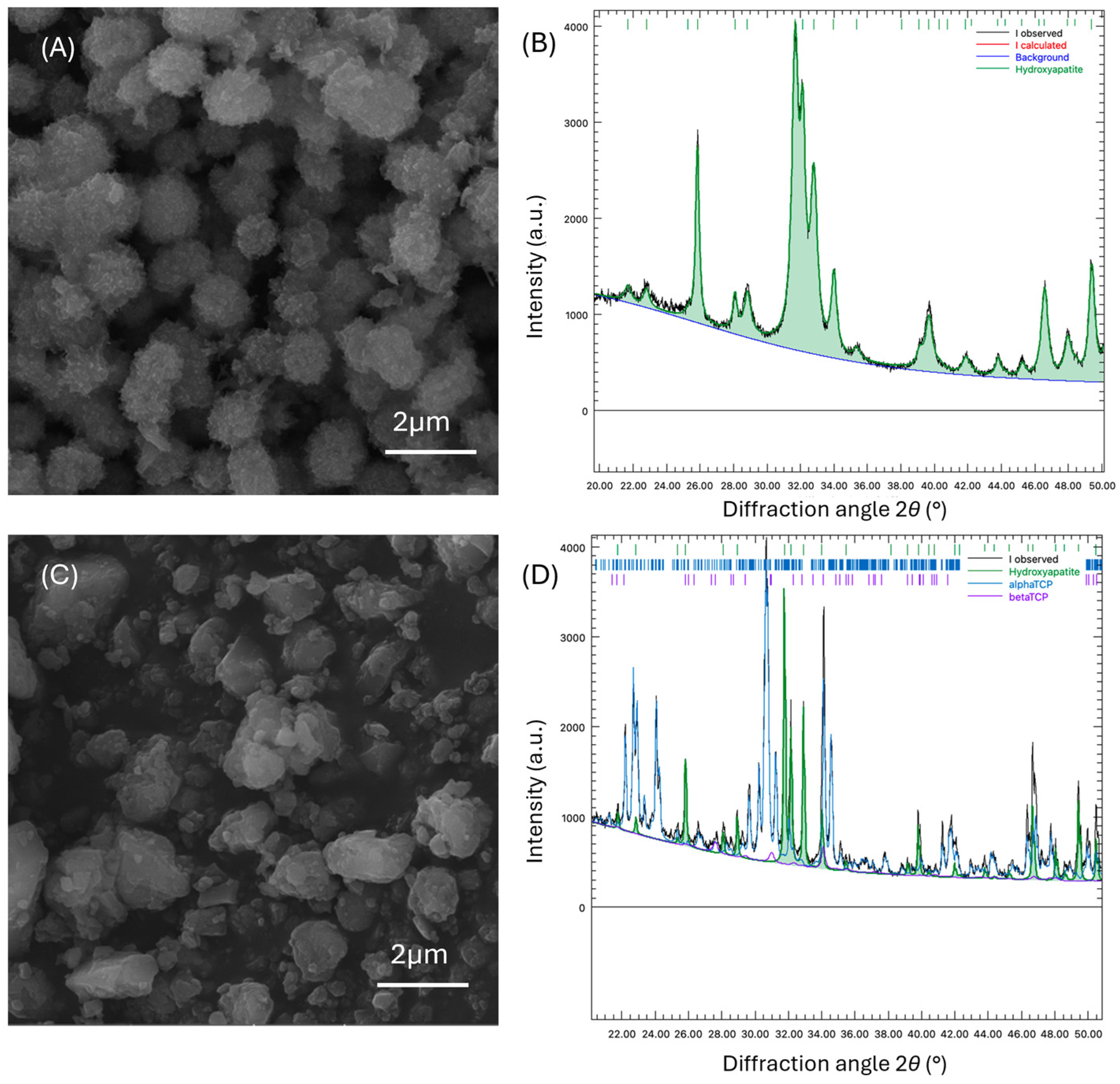
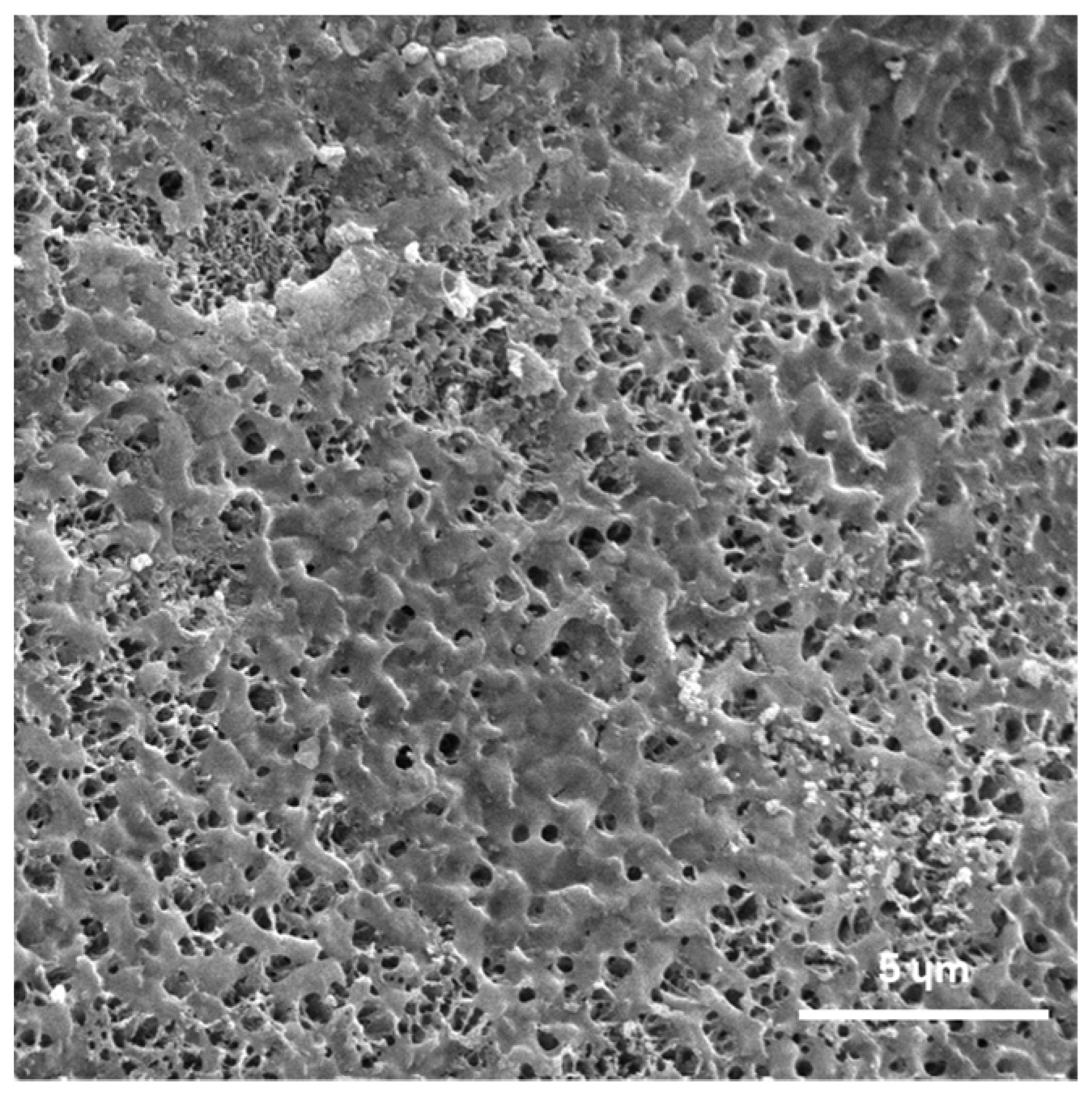

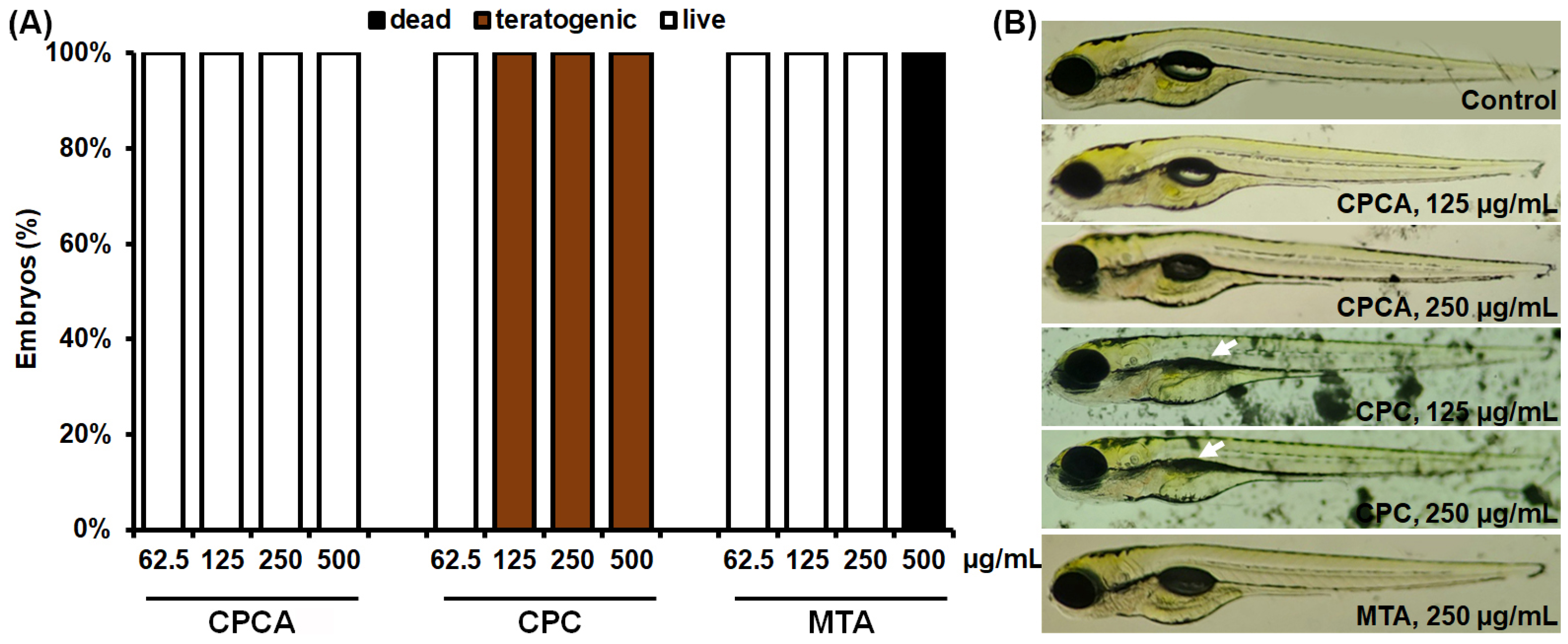
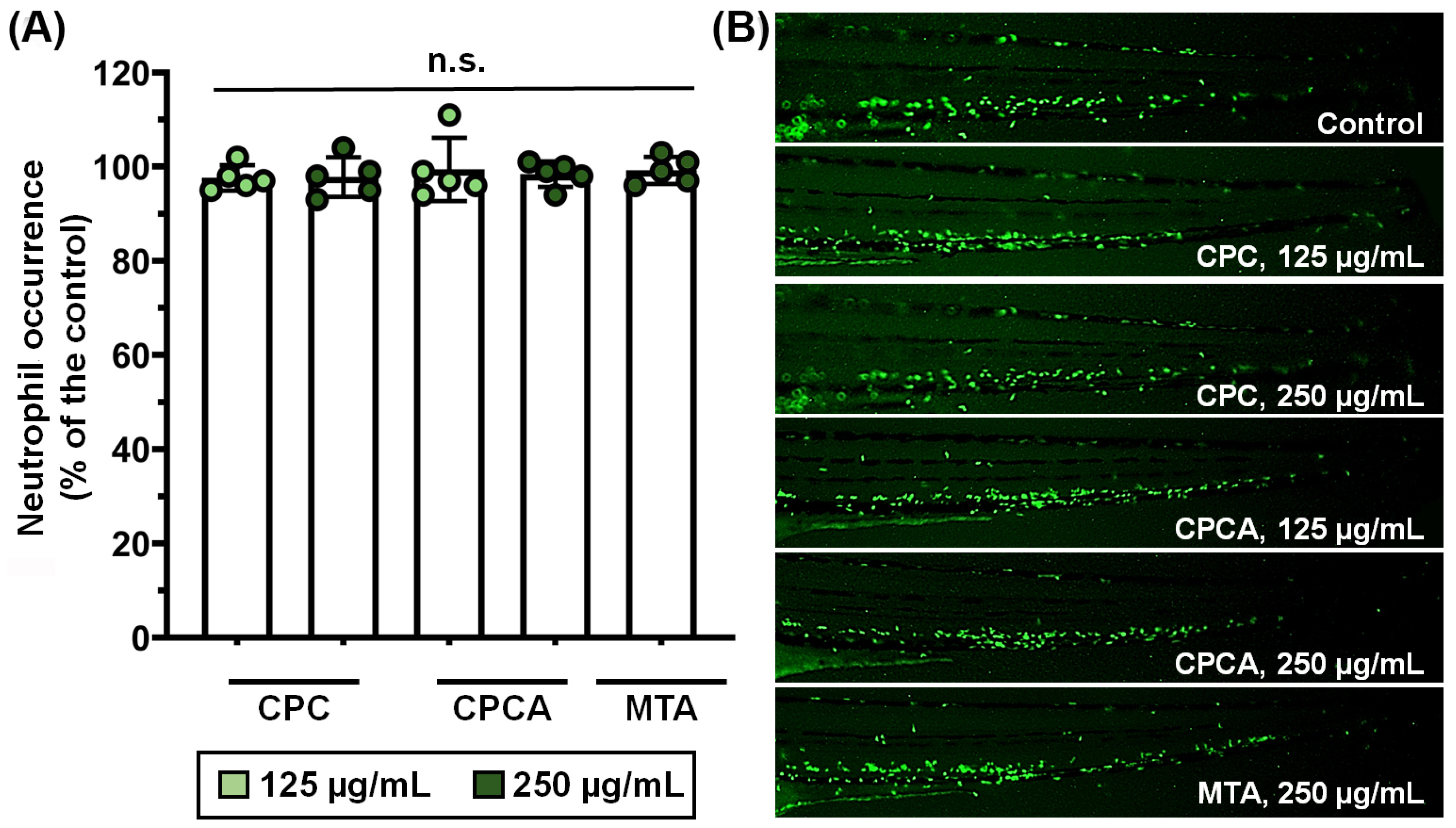

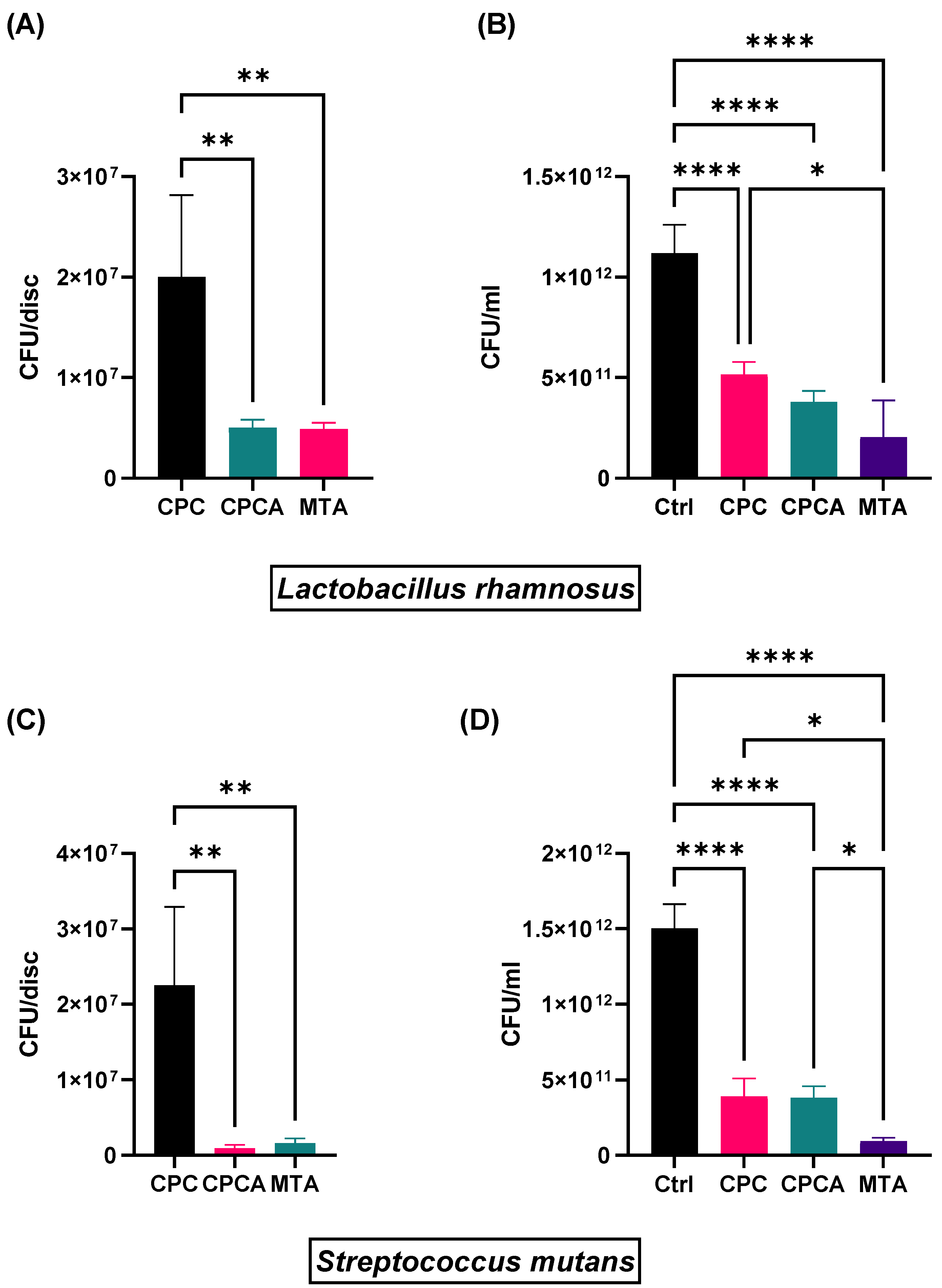
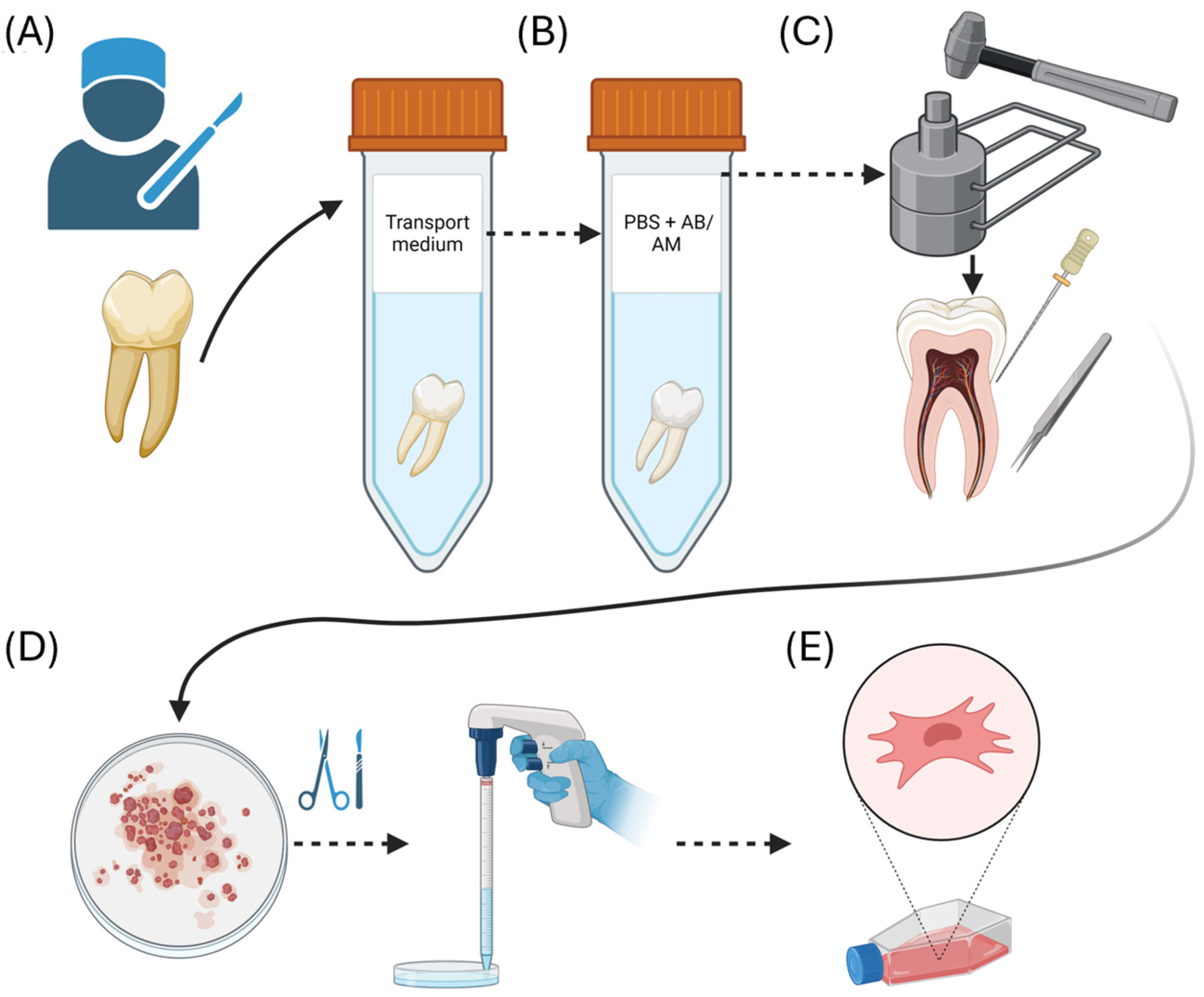
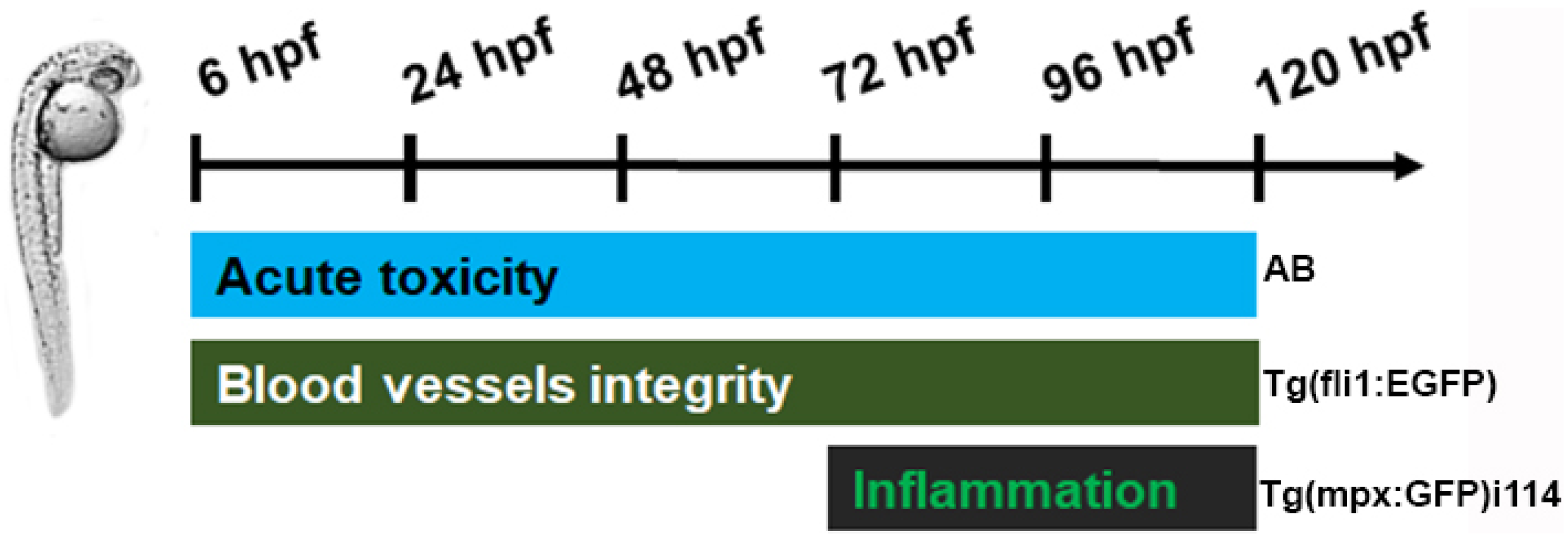
| Element | Un-Calcinated Powder (Atomic %) | Calcinated Powder (at. %) |
|---|---|---|
| Ca | 15.30 ± 1.99 | 15.400 ± 0.74 |
| P | 12.07 ± 1.90 | 12.250 ± 0.43 |
| Sr | 0.54 ± 0.06 | 0.530 ± 0.06 |
| Cu | 0.07 ± 0.04 | 0.075 ± 0.03 |
| Zn | 0 | 0 |
| Components of Precursor Solution | Mass of Components (g) |
|---|---|
| Ca (NO3)2·H2O * | 10.5800 |
| NaH2EDTA·2H2O * | 11.1800 |
| NaH2PO4·2H2O * | 4.6800 |
| Urea * | 12.000 |
| Sr (NO3)2 ** | 0.0960 |
| Cu (NO3)2·3H2O *** | 0.0439 |
| Zn (NO3)2·6H2O ** | 0.0270 |
Disclaimer/Publisher’s Note: The statements, opinions and data contained in all publications are solely those of the individual author(s) and contributor(s) and not of MDPI and/or the editor(s). MDPI and/or the editor(s) disclaim responsibility for any injury to people or property resulting from any ideas, methods, instructions or products referred to in the content. |
© 2024 by the authors. Licensee MDPI, Basel, Switzerland. This article is an open access article distributed under the terms and conditions of the Creative Commons Attribution (CC BY) license (https://creativecommons.org/licenses/by/4.0/).
Share and Cite
Vlajić Tovilović, T.; Petrović, S.; Lazarević, M.; Pavić, A.; Plačkić, N.; Milovanović, A.; Milošević, M.; Miletic, V.; Veljović, D.; Radunović, M. Effect of Acetylsalicylic Acid on Biological Properties of Novel Cement Based on Calcium Phosphate Doped with Ions of Strontium, Copper, and Zinc. Int. J. Mol. Sci. 2024, 25, 7940. https://doi.org/10.3390/ijms25147940
Vlajić Tovilović T, Petrović S, Lazarević M, Pavić A, Plačkić N, Milovanović A, Milošević M, Miletic V, Veljović D, Radunović M. Effect of Acetylsalicylic Acid on Biological Properties of Novel Cement Based on Calcium Phosphate Doped with Ions of Strontium, Copper, and Zinc. International Journal of Molecular Sciences. 2024; 25(14):7940. https://doi.org/10.3390/ijms25147940
Chicago/Turabian StyleVlajić Tovilović, Tamara, Sanja Petrović, Miloš Lazarević, Aleksandar Pavić, Nikola Plačkić, Aleksa Milovanović, Miloš Milošević, Vesna Miletic, Djordje Veljović, and Milena Radunović. 2024. "Effect of Acetylsalicylic Acid on Biological Properties of Novel Cement Based on Calcium Phosphate Doped with Ions of Strontium, Copper, and Zinc" International Journal of Molecular Sciences 25, no. 14: 7940. https://doi.org/10.3390/ijms25147940
APA StyleVlajić Tovilović, T., Petrović, S., Lazarević, M., Pavić, A., Plačkić, N., Milovanović, A., Milošević, M., Miletic, V., Veljović, D., & Radunović, M. (2024). Effect of Acetylsalicylic Acid on Biological Properties of Novel Cement Based on Calcium Phosphate Doped with Ions of Strontium, Copper, and Zinc. International Journal of Molecular Sciences, 25(14), 7940. https://doi.org/10.3390/ijms25147940










